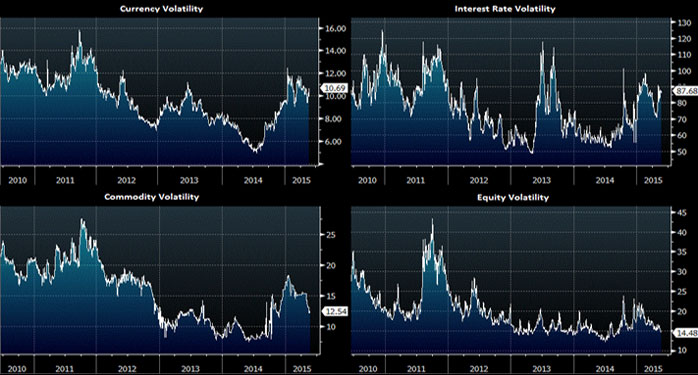Over the last five years we have seen one of the greatest bull markets in history, as well as one of the worst periods for active managers. When everything is appreciating, investment skills may not be as important and caution is more of a drawback than a virtue.
However, all good things come to an end; recent market dynamics are showing signs that regime is slowly changing.
On the monetary policy front, comments from the Federal Reserve (Fed) have shown its strong intention to raise interest rates. Two quotes from Fed Chairman Janet Yellen's speech last Friday confirmed the Fed's intention:
My guess is that this apparent slowdown [in Q1] was largely the results of a variety of transitory factors that occurred at the same time….Because of the substantial lags in the effects of monetary policy on the economy, we must make policy in a forward-looking manner. [N.B., the Fed can't wait until 2% inflation to act.]
It is very hard to predict how the market will react when the Fed starts to withdraw liquidity. After almost a decade of financial repression, there are too many unknowns. I believe this is also why the Fed keeps emphasizing that the hiking path will be data dependent.
In the market, a lot of correlations are breaking down: Correlation between the U.S. dollar index and equities, correlation between yields and U.S. dollar index, correlation between equity and economic surprises, etc. I can't show all of them in this post, but feel free to email me for the charts.
This week's chart shows the divergence between asset volatilities. Volatilities for all major asset classes have been trending lower over the last five years and have stayed at a low level since late 2012. Since late 2014, volatility in currency and interest rates has increased, while equity volatility has stayed close to cycle lows.
Financial markets are fully connected nowadays, with global macro funds hunting alpha between different asset classes. This divergence between asset volatilities should only be temporary. Either the volatility for interest rates and currency will retreat, or equity volatility will pick up. I think greater volatility in equities is more likely because of the pending interest rate hikes.
Key Takeaways: A lot of market correlations are breaking down. The divergence of volatilities between different asset classes is one example of this breakdown. It is hard to predict how the markets will react to the Fed tightening. Use caution while sailing uncharted waters.
The material provided here is for informational use only. The views expressed are those of the author, and do not necessarily reflect the views of Penn Mutual Asset Management.
This material is for informational use only. The views expressed are those of the author, and do not necessarily reflect the views of Penn Mutual Asset Management. This material is not intended to be relied upon as a forecast, research or investment advice, and it is not a recommendation, offer or solicitation to buy or sell any securities or to adopt any investment strategy.
Opinions and statements of financial market trends that are based on current market conditions constitute judgment of the author and are subject to change without notice. The information and opinions contained in this material are derived from sources deemed to be reliable but should not be assumed to be accurate or complete. Statements that reflect projections or expectations of future financial or economic performance of the markets may be considered forward-looking statements. Actual results may differ significantly. Any forecasts contained in this material are based on various estimates and assumptions, and there can be no assurance that such estimates or assumptions will prove accurate.
Investing involves risk, including possible loss of principal. Past performance is no guarantee of future results. All information referenced in preparation of this material has been obtained from sources believed to be reliable, but accuracy and completeness are not guaranteed. There is no representation or warranty as to the accuracy of the information and Penn Mutual Asset Management shall have no liability for decisions based upon such information.
High-Yield bonds are subject to greater fluctuations in value and risk of loss of income and principal. Investing in higher yielding, lower rated corporate bonds have a greater risk of price fluctuations and loss of principal and income than U.S. Treasury bonds and bills. Government securities offer a higher degree of safety and are guaranteed as to the timely payment of principal and interest if held to maturity.
All trademarks are the property of their respective owners. This material may not be reproduced in whole or in part in any form, or referred to in any other publication, without express written permission.


